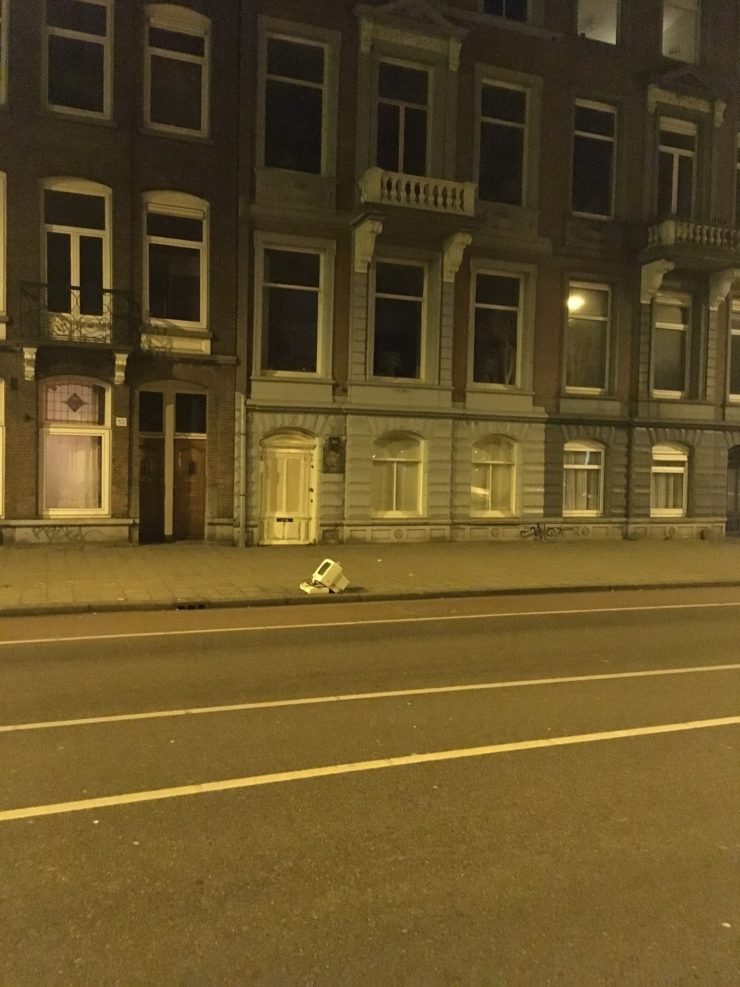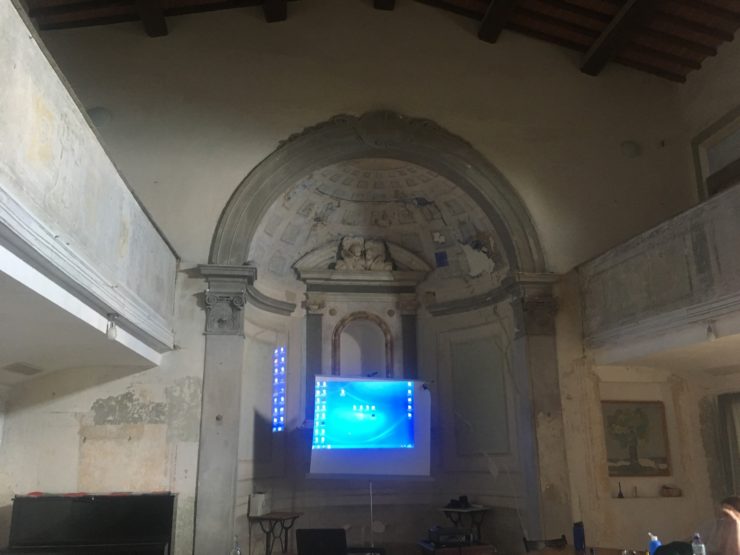Seminar Blogs
“Glitchy future(s)” – Freja Kir
Following a focus on Loud tools, a Horizon of beats as measuring tools, an Infrastructure of theatrical tools and notes on The display as a publishing tool this is the last and final post in a series of short writings focusing on current perspectives and methods for measuring transmissions in motions. These posts are rooted in the seminar and research initiative of the same title, Transmissions in Motions, hosted by the University of Utrecht. Throughout the writings, the intention is set to unpack approaches for measuring tools, instruments and imagination as bridges between unconventional and scientific methods.

Discarded tools on silent streets of Amsterdam, 2020, photo by Freja Kir
Transmitting motion
The action of motion echoes processes such as flow, travel, and mobility. While motion generally relates to movement, it is not necessarily bound to the physical process. Motion in this way could be regarded as a rhetorical indication of process. This process echoes values linked to the act of transmitting motion. Transmission in this light is rooted in words such as communication, circulation, and spreading. Like motion, transmission is not geographically bound to a specific place but may happen from one location to another without physical movement. Both transmission and motion are in this way closely related to wireless ways of learning.
Glitchy paths
Throughout the past months, Transimission in Motion (the seminar) has existed as a catalyser and research initiative for thinking through different hybrid ways of learning across the scholarly and artistic practice. This has allowed for topics to stretch from astrophysics (Valery Vermeulen) and sonification (Thomas Hermann) to performative embodiments (Carl Lavery) and the nature of publishing (Janneke Adema)[1]. While this framework has allowed for a diverse outlook, core attention has simultaneously been centered around unconventional tools for learning. When breaking habitual ways of knowledge production, this likewise demands the act of considering both motion and transmissions as formats that likewise encounter glitches and produce noise.
When suddenly being in the midst of worldwide restrictions of movement, such changes not only begs for instant adaptation but also habitual change. Effectively, when the foreseeable future relocates, this ultimately begs for questions such as: How structures for collaboration, sharing, and learning will come to take form, and how to put things into motion when movement isn’t any longer an option? With the rhetorical introduction fresh in mind, this final post directs attention to future learning, and more specifically different speculative educational futures.
Learning future(s)

Temporary learning station, Umbria, 2017, photo by Freja Kir
Imagine a future of frictionless efficiencies, post-democratic frames, large corporations, aesthetic joys, individualism, solo entrepreneurship, hackathons, and algorithmic rules (Macgilchrist, Heidrun, and Bruch, 2020). While transmission and motion may apply to a process of technological tools, such as the radio, television, or servers, the term may also link to our state of being. This reflects both terms as individual processes of passing something on. When drawing general attention to methods for learning, this likewise serves the purpose of including inspiration from the last Transmission in Motion seminar “What Follows for Students and Society in the 2020s? Three Speculative Futures for Education and Technology”. With a focus on educational conditions, this last seminar was introducing a near-future setting of smooth users, digital nomads, and collective agency through participatory, democratic, ecological humans (Macgilchrist, Heidrun, and Bruch, 2020). This three-fold structure reflects a societal order ranging from purely individualistic, to entirely collective. Led by dr. Felicitas Macgilchrist, each of these imaginary narratives was brought together to enlighten different scenarios of possible educational futures.
Although we might find ourselves at a moment of experiencing emergency online education, this current reality likewise comes to reflect future conditions for processes of learning. Seen through the lens of toolness[2], this comes to reveal speculative narratives, such as presented by Macgilchrist, as unconventional strategies to address current regulations and near future policies. Such an approach allows us to stretch the focus not to what we learn, but how we learn it.
Notes
[1] The names are listed in chronological order of their contributions to the series of the seminar.
[2] Toolness: Distinguished from the tool itself, toolness should be understood as the concept of a tool. Seen in this light, toolness can be applied to something, thereby categorizing it as a tool.
References:
- Macgilchrist, Felicitas, Heidrun Allert, and Anne Bruch. 2020. “Students and Society in the 2020s. Three Future ‘Histories’ of Education and Technology.” Learning, Media and Technology 45 (1): 76–89. https://doi.org/10.1080/17439884.2019.1656235.

